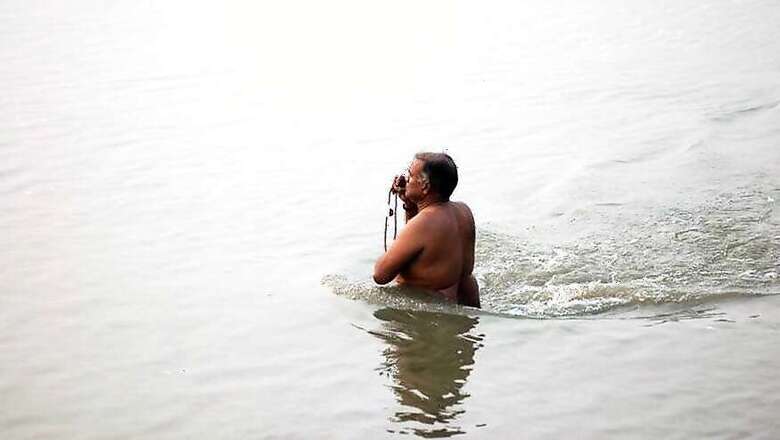
views
Kolkata: A study by IIT-Kharagpur has found that the Ganga flowing through the ghats of Varanasi is alarmingly unsafe for bathing.
The institute is planning to alert the concerned union ministries to put some check on people using river for their daily chores.
Speaking to News18, Professor Abhijit Mukherjee, Department of Geology and Geophysics, said, “The Allahabad High Court has ruled that River Ganga is a living entity. The way we are polluting the river, it may be count as culpable homicide.”
“Our study shows that river water is absolutely unsuitable for bathing, lest drinking. Living Ganges need our help so that she can breathe to survive. Every day lakhs of people and pilgrims bathe in River Ganges ignoring their health safety. This is highly unsafe and there is an urgent need for a stern measures to stop this practice unless cleaning of river ends,” he said.
Study revealed that the Biological Oxygen Demand (BoD) ranges in river Ganges is between 3 to 5 mg/l for any time in the day, along with about 16 mg/l of total organic carbon (TOC) and 31 mg/l sulphate concentrations in the water, making the river water toxic. The pollution level peaks as the river passes Assi Nala.
“The sewerage discharge canals and the crematoriums is continuously polluting the river. Half-burnt remains of human body parts float around the Harish Chandra and Mani Karnika ghat maha-samsans. The Assi Nala, one of the main city discharge canals dumps a huge volume of waste water to the river, making the holy river as noxious as possible,” he said.
Concerned, Mukherjee along with a team of expert are constantly monitoring the quality and collecting water samples of the river in 12 strategic ghats at 16 locations on a weekly basis.
In addition, they have installed a real-time sensor that gives water quality in the river every 15 minutes.
“We have also installed high-resolution, radar-based sensors that measures the Ganga water level for drop and flood in the dry and monsoon seasons. A groundwater sensors was also put in place to understand how the Ganga river water is influencing the groundwater of Varanasi. The idea is to study the safety and suitability of the Ganga water for human use along the stretch of Varanasi in a temporal basis,” Professor Mukherjee said.













Comments
0 comment